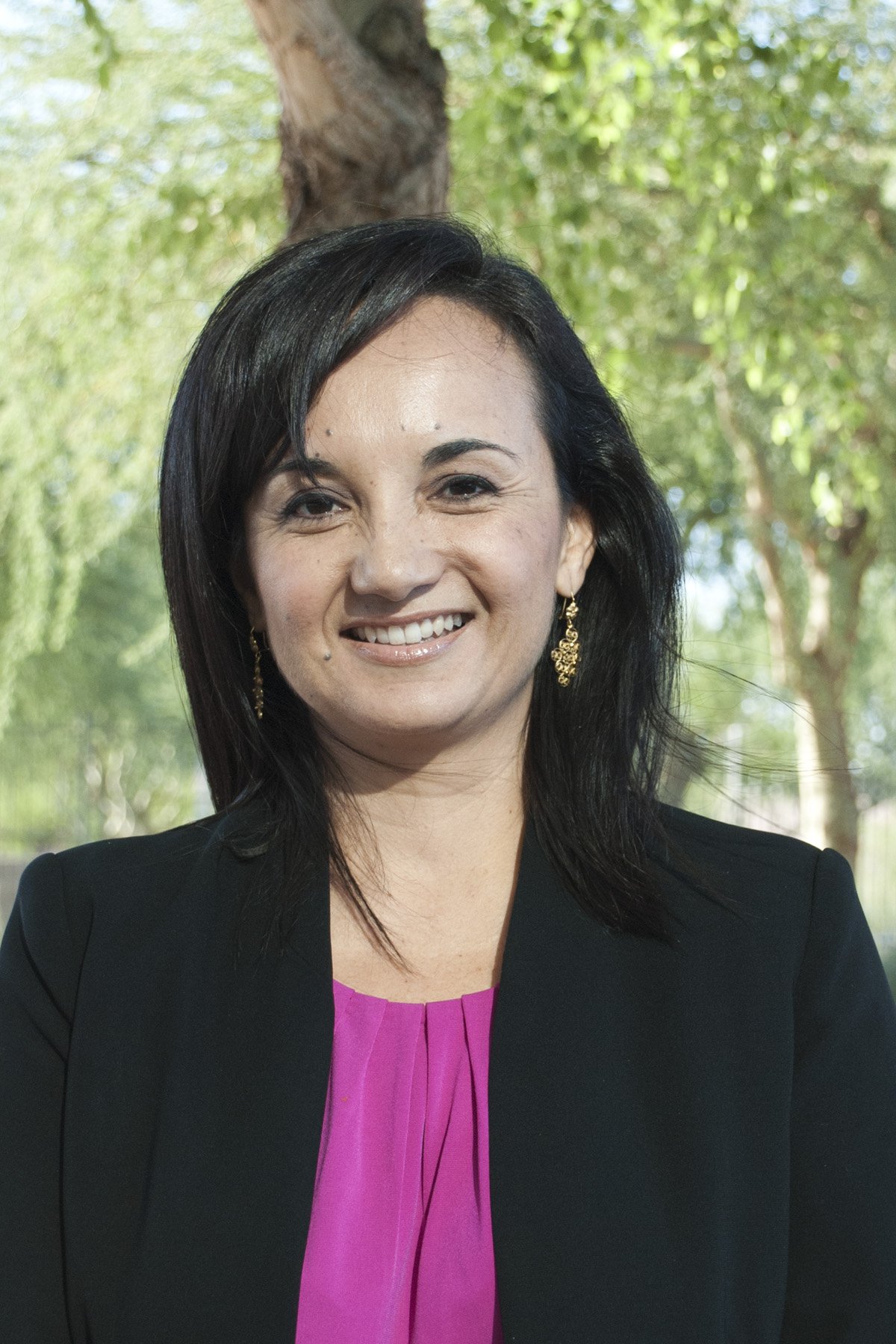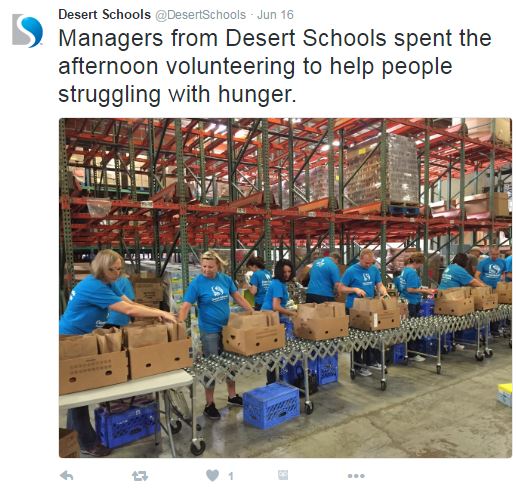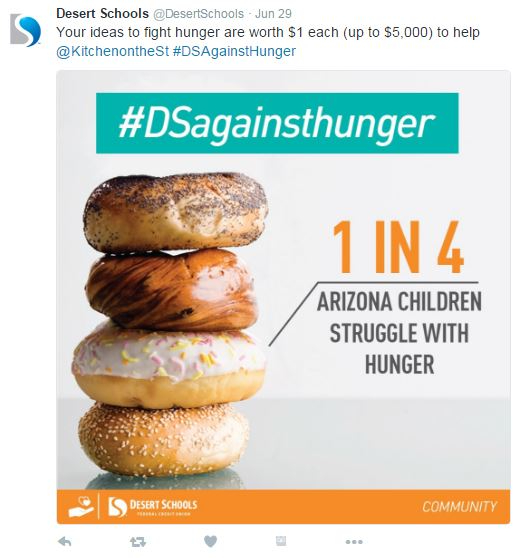 |
| Emma Garcia, AVP Community Relations, Desert Schools FCU |
One in four children in Arizona struggles with food insecurity, according to the most recent U.S. Census data. And this June, Desert Schools Federal Credit Union ($4.0B, Phoenix, AZ) worked to raise awareness for childhood hunger with the goal to donate $5,000 to support a local food bank.
In observance of Hunger Awareness Month, every time the hashtag #DSAgainstHunger was used on social media in June the credit union donated one dollar to the Kitchen on the Street organization.
In this QA, Desert Schools’ assistant vice president of community relations Emma Garcia discusses why her credit union is passionate about the issue, how the credit union decided to drive awareness through a hashtag, and more.
What made the credit union focus efforts on raising awareness for childhood hunger?
Emma Garcia: It’s really a prevalent issue on both a national and local level. One of every four children in Arizona are considered to be food insecure. It’s not the type of hunger you or I can relate to because maybe we missed lunch or our meeting ran late and it has long-term developmental consequences for the kids. Studies have shown that children living in food-insecure households are 50% more likely to miss school, twice as likely to be suspended, and 50% as likely to repeat a grade.
It becomes a bigger crisis in the month of June because kids are not in school and they’re not receiving a free or reduced fee lunch or breakfast. It’s also the time of year when food banks have the largest demand and there’s a severe drop off in donations. People just don’t know the need increases at that time.
Has the credit union run done anything relating to childhood hunger before?
EG: We have in summers past. We also have what’s called a day of service for our managers. On June 16 this year managers spent half of the day in a business meeting and the other half we worked on a volunteer service project.
Can you say more about the day of service?
EG: It went great. We had about 125 different managers who volunteered. We had three various different projects. One was at St. Mary’s Food Bank where they helped put together emergency food boxes. From what I understand we were able to help pack 50,000 meals. It’s a big effort. I think our managers connect on a much more personal level to the cause when they can be involved that way. Our non-profit partners also do a great job of talking more in-depth about the need and how volunteer support makes a difference. We also use our day of service as a time to bring greater awareness to the issue of childhood hunger and to our campaign specifically.
Our president also challenged our leaders to donate to the campaign personally. He pledged $2,000 and challenged them to reach that amount. Our staff is incredibly generous and we saw some results from that.
Why did you decide to use a hashtag to raise money?
EG: We had a brainstorming session with our team knowing we wanted to focus on this issue for the month. We talked about a variety of pieces of information we wanted to share. We wanted to talk about the need to raise money for childhood hunger, but then we also wanted to share some resources and be more positive in identifying solutions. There’s this great online video of kids who are not affected by hunger who learn about it and are just blown away by the information. They start coming up with ideas that people can simply do to try to help. We wanted to try to drive that sort of engagement and we thought a very simple way to do that was through a hashtag.
Collaborating with our non-profit partners, staff, and with the members of the community at-large, using the hashtag was a way for us to be able to track participation and shift their mentality. Because we didn’t want this to be just about raising awareness, but about trying to find resources and solutions. The hashtag was also great for use in some of our internal channels. We were using it on our digital signage in branches, on our ATM screens, and in emails to members and asked them to contribute by either using the hashtag or donating back to Kitchen on the Street. We also had an article on our homepage. It was a great way for us to focus on a message and move people forward with information.
How do you get members to recognize that they should be using hashtags?
EG: We created a variety of different banners on our ATM screens, on our digital signage, with a blurb about the need and then the hashtag. We sent an email to members with a more general message around our month-long campaign to bring awareness to childhood hunger and how we’re asking them to engage with us through the hashtag specifically. Then we also had an article on our website and we rotated banners on our homepage. We get about a million visits a month to that site so that gives us an opportunity to cycle those messages and help members become more aware of what we’re trying to do.
Then there were the social media posts. We rotated those throughout the month. We kicked off with a small video to talk about the issue, while the second post was on the broader need and how we were asking people to support through participation in the hashtag. It was the variety of messages that helped bring awareness.
For example, various schools in our community have lunch available during normal lunch hours that allow people just to drop in and have a free lunch. Folks don’t know about that. So we wanted to bring awareness to the resources that are available and how it impacts kids and their future. It’s an important thing we do.


